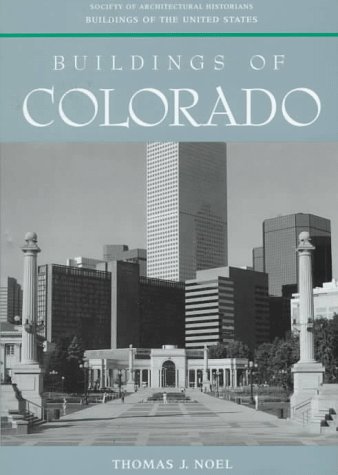Buildings of the United States S.
1 total work
A monumental, state-by-state survey of American architecture, the Buildings of the United States series celebrates the rich geographic, cultural, and economic diversity of the country. Commissioned by the Society of Architectural Historians, it records and illustrates the architecture of the urban, suburban, and rural United States, both historically and in hundreds of photographs. From pre-Columbian ruins to modern skyscrapers, from churches, courthouses, and theaters to factories, barns, and gas stations, the works of national and international masters of American architecture, as well as works wrought by unknown hands, are documented in these exceptional volumes.
The series, hailed by Edwin McDowell of the New York Times as "one of the most ambitious in publishing history," is destined to become a national treasure. The most authoritative reference available on our architectural heritage, Buildings of the United States will be a delight to the general reader and traveler as well as an indispensable source book for scholars and students of architectural history, preservation, and urban planning.
This fifth volume in the Buildings of the United States series charts the architectural history of Colorado--the nation's highest state--from the eastern High Plains to the Rocky Mountain backbone that melts into the canyons of the west. Both a quick- reference guidebook and a historical resource, this volume reflects the remarkable topographical diversity of the state, a full one-third of which is designated as federal land. In over 450 photographs and maps, it explores the structures humankind has created to tame Colorado's dramatically variant climate and terrain--crossed by barbed wire, roads, power lines, and railroads.
Tracing Colorado's architectural development from its Native American origins, the work covers the villages of Mexican settlers and mining camps set up during the Pikes Peak gold rush of 1858-59. It features the forts and farms of pioneers; homes, churches, and schools of early towns; and modern industrial centers and vacation spots. Prehistoric pueblos of the Anasazi Indians at Mesa Verde, the U.S. Air Force Academy north of Colorado Springs, and contemporary ski resorts such as Aspen and Telluride exemplify the dramatically disparate structures of Colorado's built environment.
Like all volumes in the BUS series, Buildings of Colorado is the perfect travel companion--lavishly illustrated, with complete historical documentation. Whether to Breckenridge, Crested Butte, Cripple Creek, Denver, Boulder, or beyond, any visit to Colorado--from its towering peaks to its lonely prairies--will be enhanced immeasurably by this first building guide to the Highest State.
The series, hailed by Edwin McDowell of the New York Times as "one of the most ambitious in publishing history," is destined to become a national treasure. The most authoritative reference available on our architectural heritage, Buildings of the United States will be a delight to the general reader and traveler as well as an indispensable source book for scholars and students of architectural history, preservation, and urban planning.
This fifth volume in the Buildings of the United States series charts the architectural history of Colorado--the nation's highest state--from the eastern High Plains to the Rocky Mountain backbone that melts into the canyons of the west. Both a quick- reference guidebook and a historical resource, this volume reflects the remarkable topographical diversity of the state, a full one-third of which is designated as federal land. In over 450 photographs and maps, it explores the structures humankind has created to tame Colorado's dramatically variant climate and terrain--crossed by barbed wire, roads, power lines, and railroads.
Tracing Colorado's architectural development from its Native American origins, the work covers the villages of Mexican settlers and mining camps set up during the Pikes Peak gold rush of 1858-59. It features the forts and farms of pioneers; homes, churches, and schools of early towns; and modern industrial centers and vacation spots. Prehistoric pueblos of the Anasazi Indians at Mesa Verde, the U.S. Air Force Academy north of Colorado Springs, and contemporary ski resorts such as Aspen and Telluride exemplify the dramatically disparate structures of Colorado's built environment.
Like all volumes in the BUS series, Buildings of Colorado is the perfect travel companion--lavishly illustrated, with complete historical documentation. Whether to Breckenridge, Crested Butte, Cripple Creek, Denver, Boulder, or beyond, any visit to Colorado--from its towering peaks to its lonely prairies--will be enhanced immeasurably by this first building guide to the Highest State.
